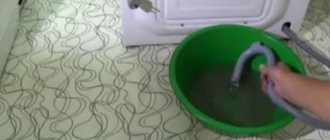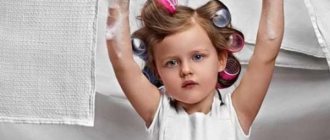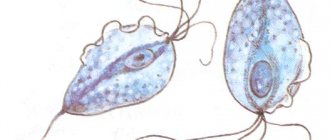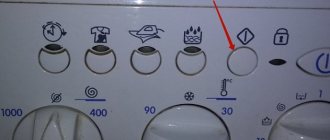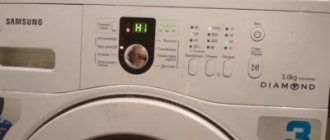Washing is designed to make things clean, but sometimes its results are disappointing. The situation when a washing machine stains clothes is familiar to many. You put your clothes or shoes in normal condition, dirty, but without stains, and you pulled out stained shirts, T-shirts, jeans, sneakers or sneakers from the machine.
Experienced housewives can make a whole list of the colors of stains on laundry from a washing machine:
- rusty, brown, red, orange, yellow;
- dark oil, black, gray;
- yellow on white things;
- blue, light blue, violet, gray;
- pink, red, blue, etc. (to match the color of bright washed items);
- bleached spots or white streaks.
There are various reasons why a washing machine gets dirty. And in 70% of cases, according to statistics from the RemBytTech workshop, it is not her fault. Let's figure out why stains appear on clothes or shoes after washing.
When the washing machine has nothing to do with it
The quality of washing is affected not only by the machine, but also by the powder, its dosage, the selected mode, the weight of the laundry, and its correct sorting before loading into the washing machine. Sometimes housewives are in a hurry or forget how to properly wash certain clothes or shoes. As a result, stains remain on things after washing. We have collected in the table the main types of stains, the reasons why they occur, and ways to eliminate the problems.
Things have faded
Brightly colored fabrics often fade when washed, especially if the water temperature is high. If you put things of different colors together, the light ones may become stained by bright fabrics. Most often, red and blue fabrics stain the “neighbors,” especially if the bright items are new and washed for the first time. For example, new jeans actively leave blue stains on other things after they are washed together.
Type of stains
Colored spots on white or light-colored laundry in the shade of some brightly colored items that were washed together with white. For example, pink, red, blue, etc.
What to do
Wash items of the same color or similar shades together. Or put dyed and dark things together that won't stain.
If you wash colored items together with light-colored laundry, then choose a program with a temperature no higher than 40°C.
Rusty water in pipes
If the water is heavily stained with rust, light-colored items may have yellow-brown stains.
Rust appears either in old pipes or after repairs to mains when the water was turned off. When you turn it back on, dark brown water sometimes comes out of the tap, which needs to be drained before using it. If the machine was set to a delayed start and started in such dirty water, then after washing you will find rusty spots on your clothes.
Type of stains
Rusty, brown, red, orange, yellow stains after washing.
What to do
If the problem is regular, then install a filter on the cold water line. In old houses, it is recommended to install two types of filters - coarse and fine filters.
Rusty dryer
Stains can appear not only during washing, but also during drying. Especially on things that are laid out to dry.
Type of stains
Rusty, brown, red, orange, yellow stains after washing.
What to do
Replace the dryer with a new one.
Powdered color corrector for white laundry (chemical or optical brightener)
It masks yellowness, settling on stains, and makes things visually whiter. But when there is no yellowness, the corrector colors white linen in a purple or bluish tone. If you “overdo it” with the powder or choose the wrong temperature, then the color corrector granules do not dissolve well and spots of the corresponding shade appear.
A striking example of such a corrector is blue granules in powder, similar in composition to blue. They enhance the effect of whiteness, but when they do not dissolve well, they leave blue spots on things.
Type of stains
Blue, purple, bluish stains on clothing or a lilac tint to light-colored linen.
What to do
Choose a powder without a color corrector.
They poured a lot of powder
The dosage of detergent should correspond to the weight and degree of soiling of the items being washed. If there is more powder than needed, it does not rinse out completely and leaves white spots. For example, jeans after such washing are often covered with bleached spots.
Type of stains
White stains on clothes after washing. Particularly noticeable on black or dark clothing.
What to do
Observe the dosage of detergent.
The washing machine is overloaded with laundry
As a result, during the rinsing process, the powder remains in the folds, where water does not penetrate well due to the tight packing of the laundry, and after washing, white stains remain, especially noticeable on black things.
Type of stains
White stains on clothes after washing. Particularly noticeable on black or dark clothing.
What to do
Don't overload the SMA.
Appearing traces of fat
Cooking or cosmetic oils sometimes leave faint stains on clothing, but after washing they become brighter and more noticeable. Fat on white fabric “appears” from contact with hot water in the form of yellow spots.
Type of stains
Yellow spots on white things.
What to do
Soak items stained with fats before the main wash. For larger stains, use special grease stain removers. Add powder enhancers (bleaches), use bio-powders with enzymes that remove traces of fat well.
Unsuitable detergent
Conventional powders and liquid products are not suitable for silk, wool and membrane fabrics, outerwear with fillers. Powders are difficult to rinse out and leave stains or streaks. In addition, silk and wool items may fade and shrink when using such products.
Type of stains
White, yellow spots after washing on silk, wool, sports fabrics, down jackets, jackets and other items made of delicate fabrics.
What to do
Use special products and the correct washing cycle at the correct temperature indicated on the label. It is recommended to wash wool and silk on a program without spinning, unless there is a special one for delicate fabrics.
Wash outerwear with products made for down or delicate fabrics.
Additional rinsing required (for down jackets and jackets)
White spots on a jacket or down jacket after washing remain even from special products, because down or padding polyester is difficult to rinse 1-2 times.
Type of stains
White, yellow spots after washing on silk, wool, sports fabrics, down jackets, jackets and other items made of delicate fabrics.
What to do
Rinse at least twice additionally. And also dry in the mode recommended by the manufacturer and indicated on the clothing label.
Things accidentally got dirty after being removed from the SM drum
For example, during drying. It’s rare, but it happens that children dirty things with dirty hands. Or the housewife herself, when she takes the laundry out of the washing machine. The culprits also include pets who have stomped their paws on drying clothes.
Type of stains
Various spots
What to do
Wash your hands after cooking or applying cosmetics and before removing laundry from the machine.
Keep an eye on young and four-legged helpers so that they do not touch drying things.
What stains can you encounter?
Housewives who have been doing laundry for many years have probably encountered many types of multi-colored stains that an automatic machine can leave. But their origin is most often the fault of the owners of the equipment themselves, who did not provide proper care for the unit.
The list of the most common contaminants is as follows:
- colored spots on white and light-colored things;
- rusty, brown, red or orange;
- blue, purple, lilac;
- white stains on black clothes;
- yellow spots on white things;
- yellow on silk, wool, jackets;
- oil dark, gray;
- dark and black spots.
The washing machine stains things - reasons that can be eliminated yourself
If after washing dark, gray or black spots appear on the laundry, then the reason may be due to irregular or lack of care of the machine. This results in:
- dirt and mold in the fold of the cuff,
- mold in the powder tray,
- dirt in the pump filter.
Dirty cuff
Dirty water gets into the fold of the rubber part and stagnates. If you do not regularly wipe the cuff dry and close the SM door immediately after removing the laundry, a dirty coating will quickly form on the cuff and mold will begin to grow.
Moldy tray
The detergent receptacle is also constantly in contact with water. If you do not take care of it and the installation site, these parts of the machine will quickly become covered with mold. When washing, dirt and mold get on the clothes in the drum, and stain the laundry with gray or black spots. In addition, clothes begin to smell bad, even when using conditioner.
Dirty filter
Debris, dirt, and mold can grow there. In washing machines with a simple drain pump, a dirty filter causes an unpleasant odor. And in models with a recirculation pump, it is also a source of stains (dirt from the filter gets directly onto the laundry in the tank when the pump is running).
Regular machine care can help you cope with these problems:
- Remove the tray from the machine after each wash, rinse and dry. Also wipe the niche for the tray so that there is no plaque on its walls.
- Wipe the cuff dry after using the machine, and keep the washing door open after washing.
- Clean the pump filter regularly when maintaining your machine. Wash it every time after washing wool and fleecy fabrics. If you wash smooth natural and synthetic fabrics, then it is enough to clean the filter once a month.
- To prevent contamination and remove odors, once every 3-6 months it is recommended to “run” the washing machine without laundry with citric acid at a temperature of 90 degrees, as described in the article on useful tips How to remove musty smell from a washing machine. If you haven't done this in a while, repeat the lemon cleanse twice.
When preventive cleaning does not help and stains on clothes appear again after washing, it means that there is a serious malfunction and the equipment needs to be repaired.
Features of removing stains on denim
Denim fabric has the ability to absorb any dirt, so if you ignore the problem, you may encounter damage to your favorite things. When washing jeans, you need to remember the following rules:
- Clothes that are heavily soiled require pre-soaking. To do this, use soap shavings or any other cleaning agent. Soaking time varies between 30-60 minutes. It is not recommended to keep jeans in water any longer.
- Machine washable at temperatures up to 40 degrees, otherwise the denim may lose its shape and color.
- Stain removers and bleaches are not recommended in such cases, as they can eat away at the fabric and lead to loss of its color characteristics.
- It is recommended to wash dark jeans with a small amount of vinegar; it helps preserve the color and enhance the effect of the washing powder.
Some denim items are considered quite fragile, so it is prohibited to use aggressive chemical products for washing them. Many housewives use home methods for removing stains:
- Thoroughly rub the problem area with half a bar of laundry soap, moisten it with a small amount of water and leave the item for 1 hour. After that, it is rinsed in cool water and sent to the washing machine.
- Pour 1 spoon of turpentine into a large bowl of water and mix the ingredients. Place dirty clothes in a cup, leave for 20 minutes and rinse in clean warm water. To get rid of an unpleasant odor, the denim item is sent to the machine and washed using powder and conditioner.
- To preserve the color characteristics of the fabric, pour 2 tablespoons of apple cider vinegar into a bowl of water, soak the laundry in the resulting solution, and then wash it using an automatic washing machine.
If home methods do not help remove stains, you need to use chemicals or take the item to the dry cleaner.
Malfunctions in which the washing machine stains the laundry
Below are the main breakdowns that RemBytTech specialists encountered during repairs, as well as the cost of eliminating them.
A metal object got into the tank - from 1300 rubles.
When washing, popped underwires from bras often “fly” into the machine. And also coins, nails, screws, nuts, bolts, ladies' pins and bobby pins forgotten in clothing pockets. This metal trash settles at the bottom of the tank, rusts from moisture and stains the water. And it leaves brown-yellow and rusty stains on things.
Signs
The washing machine leaves brown, rusty, orange or yellow stains on clothes. A noise or crackling sound in the machine drum that you heard a month or two ago.
How to fix
You need to remove a foreign object that has fallen into the tank. You can do this yourself according to the instructions in the article A bra wire got into the washing machine - what to do and how to get it out
If you are “far” from technology, then it is better to call a specialist.
The drum seal is leaking - from RUB 4,000.
The oil seal serves as a gasket between the drum and the bearing on the shaft. It protects and seals the bearing from water. For better glide, it uses lubricant. Over time, the seal wears out, dries out and loses its seal. The water begins to wash out the lubricant and carry it into the tank and drum of the machine. Therefore, greasy stains appear on clothes after washing (black, gray, dark), in the form of droplets or large blots.
Oil seal leakage also affects bearings, which rust and fail.
Signs
Dark oily, black, gray stains. There may be grinding or increased noise when the washing machine is operating, especially during the spin cycle.
How to fix
The oil seal and bearings need to be replaced. It is better to change them in pairs at once, so as not to disassemble the car again after a while. A bearing that has had contact with water, even after cleaning, quickly becomes unusable.
The recirculation pump and the tube to the tank are dirty - from 2800 rubles.
If you are unfamiliar with caring for your washing machine, then dirt similar to sewage gradually accumulates in the pump housing and the entire circulation tract. It cannot be removed even by cleaning the machine with citric acid. Through the tube through which the pump pumps water into the tank, dirt gets into the drum of the machine and stains things.
Signs
Dark, black, gray spots on things after a washing machine with a circulation pump (mainly LG, Electrolux, AEG)
Experienced technician and fair prices for repairs
The service center offers restoration of household appliances. We work with washing machines from all manufacturers. Diagnostics and restoration are carried out at the customer’s home; there is no need to waste time and money on transportation. The technician will quickly detect a breakdown, indicate the cost of restoration, or perform a flush immediately after diagnosis. The prices will please the customer. Extensive experience in working with household appliances allows us to provide a guarantee on the work performed. This means that after the master leaves, you will confidently use the equipment and stop worrying about your things.
It's time to change the filter
Gray stains, matted flakes of dirt, stains - all this may indicate that the filtration system is clogged. Freshly washed items give off a musty smell that cannot be eliminated by repeated washing. Over time, this smell begins to spread throughout the room where the device is located.
Dirt constantly accumulates in the filter, and fungus and mold can grow on it. If measures are not taken in time, the filtration system will fail and will have to be replaced. How to prevent filter damage:
Rusty tap water
If rust stains appear on your clothes, you should definitely check the condition of the water entering the machine from the water supply. The easiest way is to hold a white cloth under running tap water for a while. If after 5-7 minutes a characteristic rusty stain forms on the fabric, the water is too rich in iron, which causes contamination of the laundry during washing. In this case, a special filter must be installed on the pipe leading to the machine, which will bind metal particles. As a last resort, if it is not possible to install a filter or it does not cope with this task, before washing it is necessary to drain the stagnant water from the water supply for at least 30 minutes.
Powder stains after washing, how to remove?
In fact, an overabundance of funds will not save the situation, but will make it worse.
Powder stains after washing, how to remove:
- After all, a large amount of powder is poorly washed out and can cause the formation of white stains, green, yellow or red spots.
- It all depends on the dye contained in the powder.
- In order to remove traces of white powder, you need to load the products into the machine again and turn it on, but without adding detergent. After rinsing again the problem will disappear.
After washing


